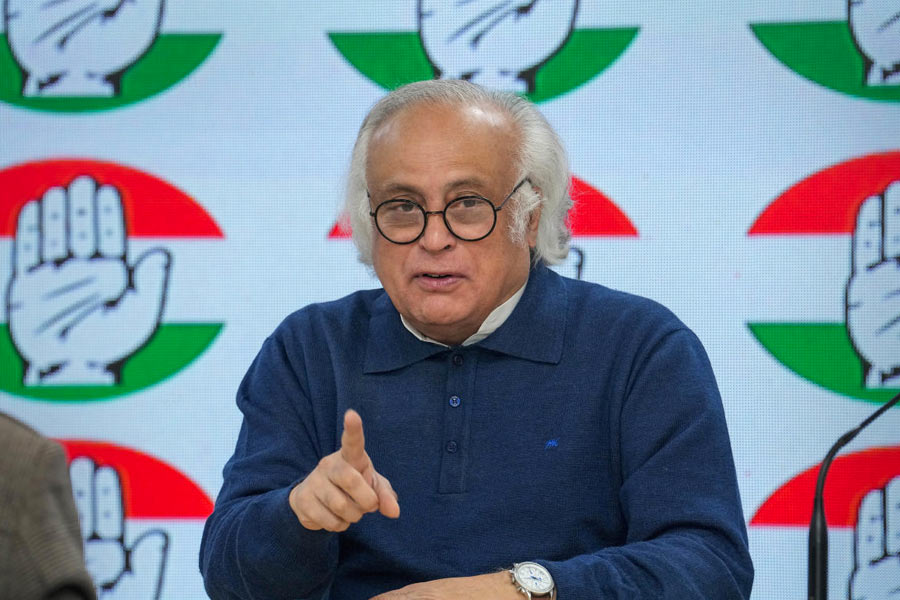|
|
| Easy to play |
When I heard about the outrage caused by a cartoon strip depicting Gandhi being beaten up by an American yob, I immediately headed to my local foreign-magazinewallah. The idea was to grab the issue of Maxim magazine before someone banned it. No ban has been yet forthcoming, but I suspect this is because Maxim probably sells no more than a total of about ten copies all over India, and certainly not due to any far-sighted, mature anti-censorship policy on part of Ms Sushma Swaraj or the local Delhi government.
As Rukun Advani points out at length in his column (“India’s founding foreigners”, February 8), I myself have not been shy of using national figures as raw material for my fiction. But even the “anarchist” and chronic lampooner in me found the Maxim strip offensive.
Couched among the usual displays of female skin, latest gadgets and scatological readers’ snapshots is the item called “Maxim’s Kick-ass Workout”. The sub-copy says, “Haunted by an urge to beat the crap out of somebody…anybody? Crush two birds with one cheap shot with our vicious total-body training regime.” The idea is to build muscles while doing bodily harm to someone, (in order, obviously, to be able to do more bodily harm to more people even more effectively). Below this, a man punches, head-butts, kicks and then strangles an unresisting Gandhi figure under exhortations such as “Teach those pacifists a lesson about aggression while you build your upper body” and “Wring his neck and you’ll strengthen your man-titties and your ego.”
Now, why should a series of silicon graphic illustrations of a white man in shorts and singlet beating the hell out of an older, much smaller, bespectacled, dark-chocolate figure in a short dhoti have an effect on me when, for example, (in the previous Maxim issue) a new Boeing airliner being described as the “Love child of the Space Shuttle and the Statue of Liberty’s vibrator’, just makes me shrug and turn the page?
One reason is the thinly disguised discrimination of it — I can’t imagine the devil-may-care boys at Maxim having the testosteronal wherewithal to put someone like, say, Jesus Christ or Martin Luther King in place of Gandhi. And one must ask, why not? After all, one was a figure who inspired Gandhi and the other was someone who was inspired by the man, so why not knee one of those “pacifists” in the groin? I’ll tell you why not. Because, in the case of JC, Maxim would risk having the entire American-Christian-fascist network head-butting them with soft-nosed bullets, and, in the case of MLK, they would have every Brother and Sister of Colour, even the Malcolm X-ites and Farrakhanites, trying to dropkick them through the window-frame of solvency.
The second reason is found in the sentence “beat the crap out of somebody…anybody?” As George “Hanging Chad” Bush works overtime to turn his country into a rogue state, nothing resembles today’s official United States of America more than the slightly paunchy guy in shorts and ganji stomping on a helpless “half-naked fakir”. In fact, if I could have tele-controlled the brains of the guys who designed this neat little item, I would have replaced the MKG look-alike with an old Vietnamese peasant woman or — hey, even cooler, dude! — a malnourished Iraqi child.
Does this mean I endorse our American desis trying to sue the living daylights out of Maxim? No. Before the ’92 riots and the Gujarat pogrom last year, I might well have said “Yes, go for it.” But now, as Rukun Advani points out, a lot of these same desis are far more substantially guilty of helping to head-butt Gandhi and strangle him than any American men’s rag, and their attacking Maxim is like a very large, charred, pot calling a minuscule kettle black.
*****
Since this “Thin Edge” was triggered by Rukun Advani’s column last Saturday, let me continue to work backwards through his piece. As will be clear to any reader of my previous writing, I mostly agree with what Rukun says: about Hindus being as capable of violence as any other community, about Gandhi and Nehru being “foreign” to the new India, about the society we are in critical danger of becoming. There are, however, one or two points where I differ.
Modesty, not to mention avaricious prudence, would normally prevent me from looking what is quite a large and unexpected gift-thoroughbred in the mouth, but Rukun’s multi-layered examination of my novel does demand some sort of a response from me.
I don’t know if Rukun has actually seen the Maxim cartoon — I suspect not — but I am uncomfortable, to say the least, when my depiction of Subhas Bose gets put next to a sophomoronic head-bashing of a cartoon Gandhi. It’s certainly not the case that I have a problem with tugging at Gandhi’s dhoti or Nehru’s naada or, indeed, the oversize belt-buckle of Bose’s towering personality. All of these men knowingly and consistently occupied iconic space in the imagination of the public of their time. Therefore, their lives, their actions, their statements, both written and spoken, and what I would call their self-aware theatre, are and should be available to the public and individual imaginations for use.
However, what should be is rarely how it is, and I accept Rukun’s doubtlessly accurate inside knowledge of how the Netaji Bureau, Krishna Bose and Sugata Bose reacted to my book: with a “Voltairean view” that even a “vile” book had a right to a reading public. I also accept that had Ayatollah Thackeray seen The Last Jet-engine Laugh as a juicy political full-toss, he might well have come charging out of his crease, and yes, had Mamatadi, (my representative in the Lok Sabha) seen it as a decent “through pass”, it might have brought out the Diego Maradona in her.
But as to the book’s “excessive linguistic fertility”, its large size and price, its “pyrotechnical gyrations entailing futuristic settings and prolonged flashbacks” — in short, to its being a difficult and expensive book, I am forced to re-target Rukun, one of the most erudite men in the subcontinent, towards a novel called The Satanic Verses. And, remembering what happened to Verses, I have to say I am jolly glad it was Rukun, and not Khushwant Singh, who pronounced on the publishability of my book.
And as to the Indian publisher who, according to Rukun, “bid hard for the book”, I have to correct him that this mutual friend of ours was not “bidding” for the book — he was the first one to support it, almost from its inception, with money and the fullest warmth of friendship. However, once the book was done, we disagreed about its final shape and content and decided to part company as writer and publisher. The Last Jet-engine Laugh was then published by HarperCollins and, despite startlingly favourable reviews, it met a glass wall at the cash-tills in India. As the book’s sales figures outside India indicate, this may have had more to do with internal wrangling within the publishing industry here than with the book’s own merits and demerits, or, indeed, with the Hindu Fascists’ busy schedule that did not allow the novel to be, in Rukun’s words, “burnt and sold”.
I myself hate the smell of burning paper and, despite the way the world seems to be going, I hold a passionate hope that we are at the end of the time when books get burnt for the ideas contained within them, no matter how incendiary or “offensive” those ideas may be. I hope that when the paperback of my novel is shortly released here, the reading public will have a chance to make up their own minds about the story I have tried to tell — a story in which the central character is ultimately brought to the realization that he has more in common with Subhas Bose than he would like to admit, in which he is obliged to identify with the old Subhas he imagines, and connect the gulag where Subhas finally dies to the gulag of his own old age, in which he is forced to recognize that life, quite often, plays havoc with the nether-regions of people’s dreams.












